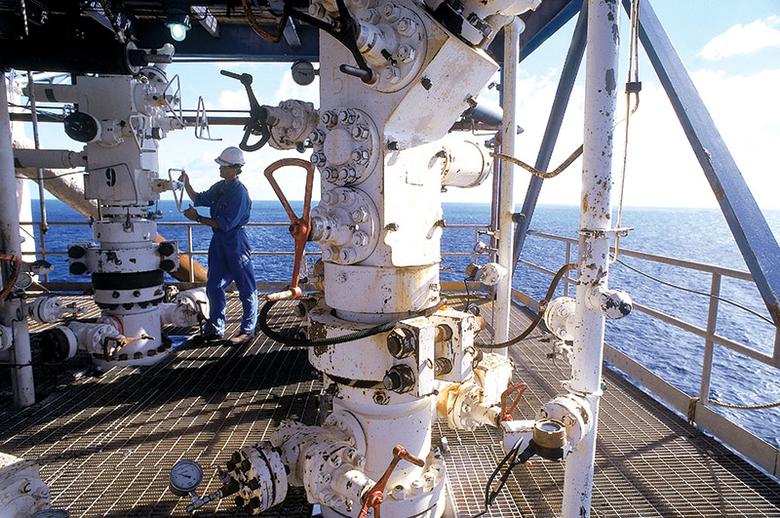
OIL PRICES 2017: $58

BLOOMBERG - After pulling off the biggest oil-market deal in a decade, OPEC faces a new balancing act in 2017: boosting prices without igniting shale.
The first shale boom spurred a global supply glut that started prices sliding in mid-2014, and was amplified that November by a pump-at-will OPEC strategy aimed at market dominance. During the ensuing rout, prices in New York fell from more than $100 a barrel to $26.05 in February, straining the budgets of companies and countries alike.
Now, the Organization of Petroleum Exporting Countries has a new plan for 2017: Trim output, boost prices and better exploit the world's most significant natural resource. With the cuts, prices could average $58 a barrel, according to the median of 24 analyst estimates compiled by Bloomberg. While that 29 percent gain on this year's average will aid OPEC members, it could also spur U.S. drillers to add rigs.
"OPEC is aiming for a much-needed lift to the oil price, given the stretched fiscal balance sheets of every producing nation," said Ed Morse, head of commodities research at Citigroup. "The question really should be what happens afterwards -- how fast is U.S. shale going to come back?"
At 8.8 million barrels a day, the U.S. is already pumping almost as much crude as two years ago, with just a third of the rigs it operated at the peak, data from Baker Hughes Inc. and the Energy Information Administration show. Since May, drillers have added about 200 rigs, taking advantage of rising prices as talk of an OPEC supply cut circulated.
With OPEC's oil revenues slumping to $518 billion last year from $956 billion in 2014, the group may have had little choice on the cutbacks. Even Saudi Arabia, the group's biggest producer, has found itself burning through billions in cash reserves, slashing public-sector wages and tapping bond markets to plug a budget deficit.
The analysts predicting that Brent will average $58 a barrel next year expect $53 in the first quarter and $56 in the second. West Texas Intermediate will be about $1.40 cheaper than Brent in 2017, the estimates show. WTI settled at $53.90 in New York on Tuesday.
Not Enough
Even $58 oil wouldn't eliminate budget deficits for eight OPEC members assessed recently by the International Monetary Fund. To erase their shortfalls, crude would need to average at least $62 in 2017, according to the IMF.
With the cuts, "OPEC stands to gain a great deal, in terms of revenue enhancement," said Jan Stuart, global energy economist at Credit Suisse Securities LLC in New York.
Challenges remain. For one thing, compliance with the output agreement. The group's members "tend to cheat," former Saudi oil minister Ali Al-Naimi said in a Dec. 2 speech, before the agreement between OPEC and non-members was finalized.
He also expressed skepticism that Russia, considered a wildcard during talks, would follow through on its promise to reduce its output by 300,000 barrels a day. "Will Russia cut?" Al-Naimi asked. "I don't know. In the past, they didn't."
Internal Threat
The biggest threat to OPEC's plan could come from within. Nigeria and Libya got exemptions because conflicts in both countries damaged their output. If each nation reached its potential next year, then their additional barrels would almost wipe out the producer group's supply cuts.
Iran too didn't have to make cuts from the same starting point as other OPEC countries. Several years of sanctions lowered its production and revenues from exports and the country argued that it needed the right to make up for that period.
Another challenge could come from the dozens of U.S. drillers who survived the rout by becoming leaner and more efficient.
After three years of turmoil, there are already signs of a rebirth in America's shale fields as prices have risen and stabilized at around $50. If they jump by another $10, shale output that's now at 4.5 million barrels a day could quickly rise by 500,000 barrels, Citigroup's Morse wrote in a Dec. 22 research note.
A bigger boost in prices could mean a million-barrel shale surge from the U.S., Macquarie Research analysts Vikas Dwivedi and Walt Chancellor noted in a Dec. 12 report to clients. That would all but obliterate the cuts OPEC agreed to in November.
Companies such as Continental Resources Inc. and Whiting Petroleum Corp. have already been rewarded by investors, with Continental's shares more than doubling this year and Whiting's shares climbing by about 30 percent. U.S. producers are already buying hedging contracts locking in higher prices for next year, according to the Macquarie note, giving them the financial flexibility to grow.
Still, OPEC could have some time to adjust, according to Mike Wittner, head of commodities research at Societe Generale SA in New York. As prices rise, costs may rebound as oilfield service companies seek to rebuild in better times. The result: OPEC's biggest rivals could struggle to revive output quickly enough to disrupt the re-balancing of the oil market, according to Wittner.
"It's going to take them a while to gear up," Wittner said. "The investment's got to gather pace, the drillers and the fracking contractors also need time. It's a gradual process."
Which suggests 2017 may not be the crunch time many expect. That could come in 2018, according to estimates from Oslo-based consultant Rystad Energy. While output including crude, condensate and natural gas liquids will increase by 93,000 barrels a day next year despite the promised cuts, it could jump by almost 10 times that in 2018, and then register similar rates growth through the end of the decade, Rystad estimates show.
-----
Earlier:
OIL INVESTMENT: -$1.99 TLN + $630 BLN







